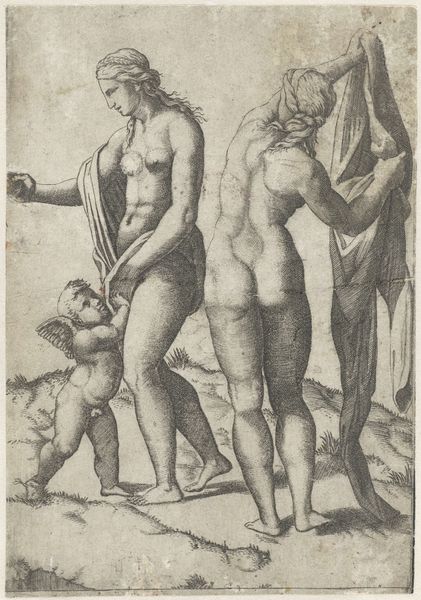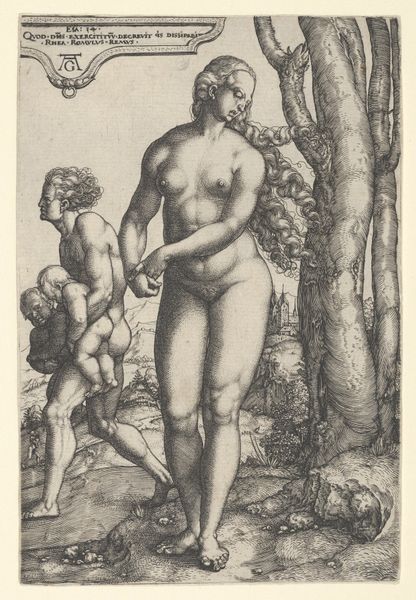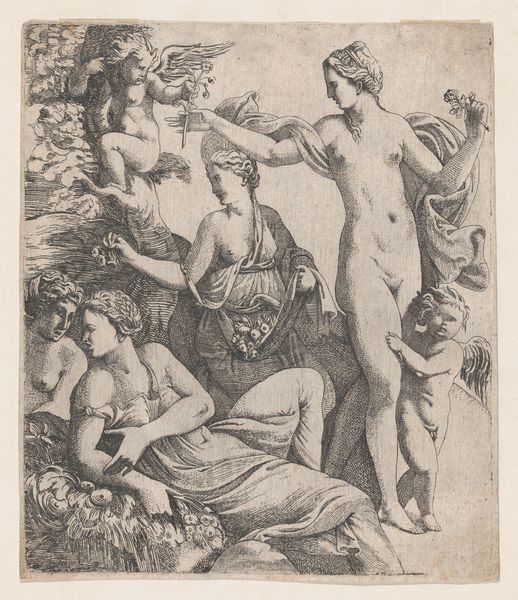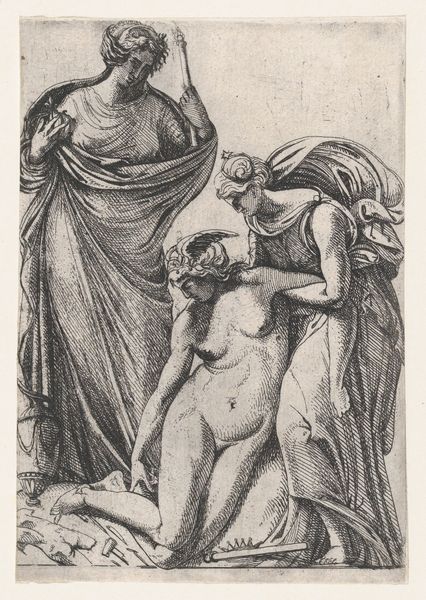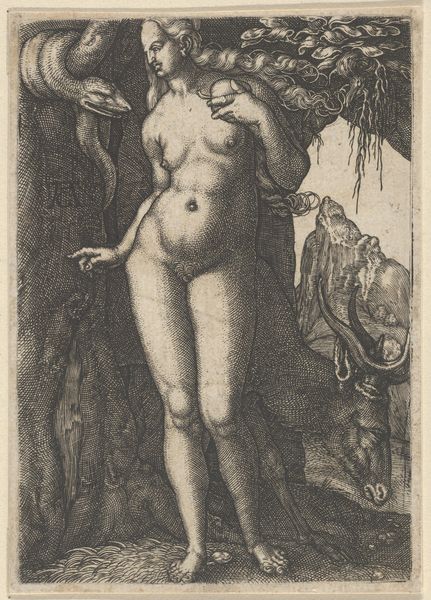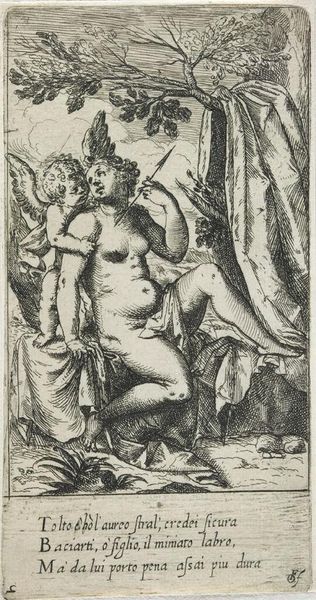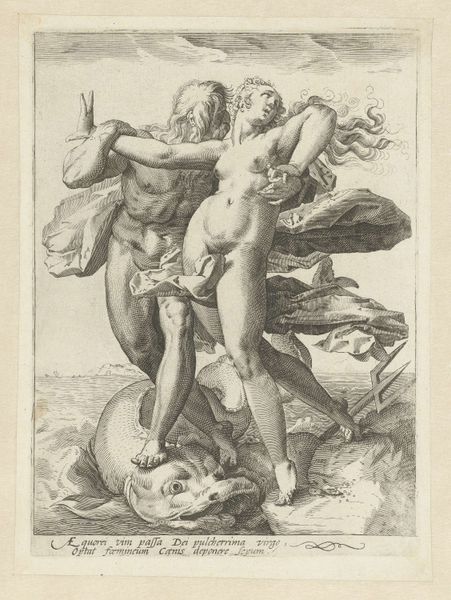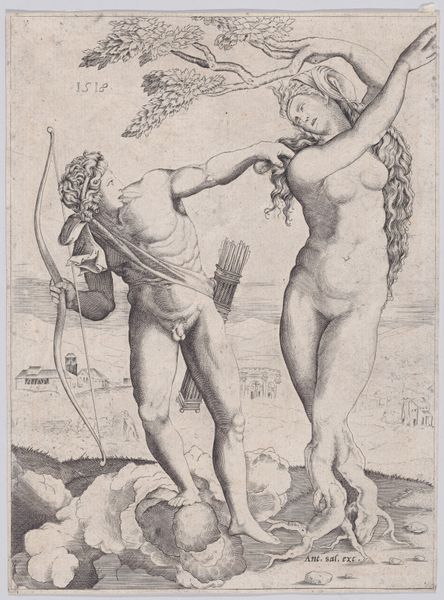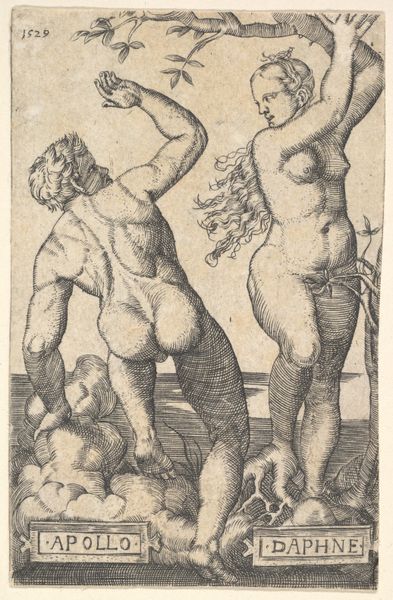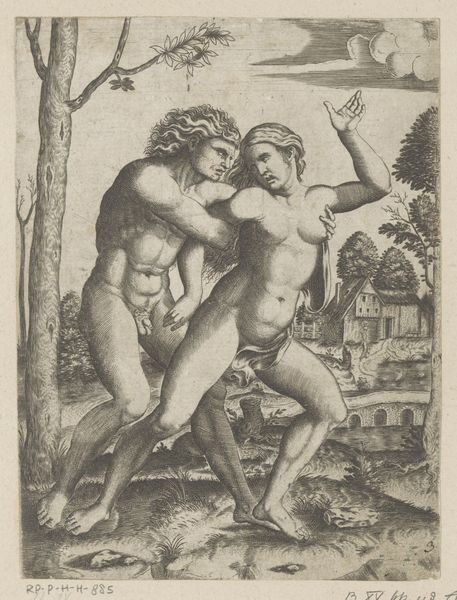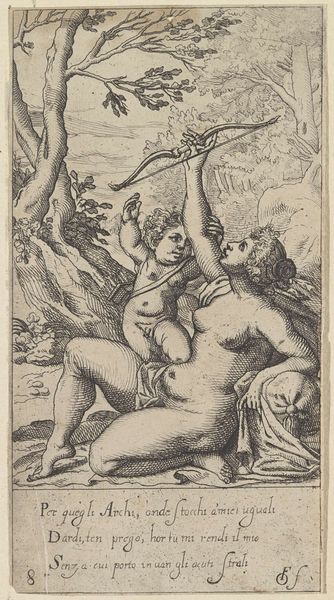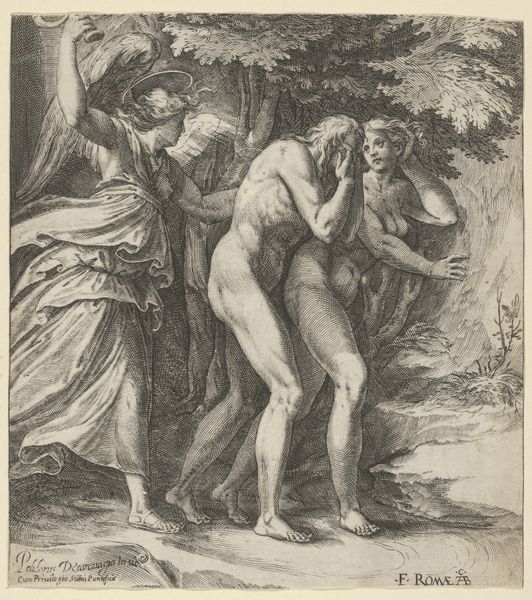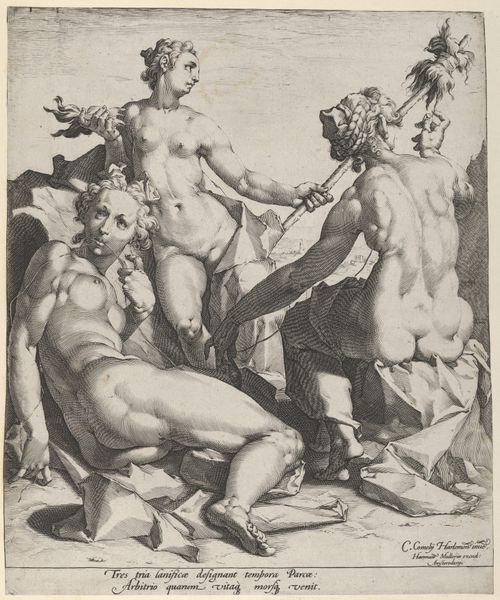
drawing, print, etching, engraving
#
drawing
# print
#
etching
#
figuration
#
female-nude
#
line
#
history-painting
#
northern-renaissance
#
nude
#
engraving
#
male-nude
Dimensions: Sheet: 4 5/8 × 2 15/16 in. (11.7 × 7.5 cm)
Copyright: Public Domain
Curator: Heinrich Aldegrever's 1553 engraving, "Pyramus and Thisbe," currently at the Metropolitan Museum of Art, presents a stark rendition of the classic tragic tale. Editor: Immediately striking is the starkness of the imagery. It's unsettling, almost aggressively detailed for such a small print, and very much emphasizes death, suicide, and despair. Curator: The northern Renaissance fascination with classical themes is evident here, but consider Aldegrever’s choices in making this print. The very process of engraving, a meticulous subtractive method using burins on metal, mirrors the irreversible act of self-destruction depicted. The materials—copper plates, ink—become integral to understanding the themes. Editor: And those themes! We have the two lovers, nude, each succumbing to death by their own hand, but not before Thisbe has arrived to find Pyramus's body and realizes the true, terrible depths of their miscommunication. Notice how the water fountain—a classical motif symbolizing purity and life—contrasts sharply with the bloody demise. Curator: Precisely. Water and blood, life and death intertwined, materially presented on the copper plate through the pressure and skill of Aldegrever's hand. Consider also the consumption of these prints by contemporary audiences. Prints democratized art; for a price, anyone could possess and contemplate classical tales. Editor: Right, and that access feeds into the perpetuation of specific visual codes. Nudity signals vulnerability, while the sword becomes the definitive instrument of passion gone awry. The symbolic weight is amplified by the story's original iteration through Ovid, becoming a meditation on reckless and misunderstood desire, with imagery building upon prior tellings. Curator: The level of skill required to create such details in a medium that demands planning is impressive; he literally had to grave into existence these classical figures. Editor: Indeed, and in the figures, poses, and accoutrements we recognize that ongoing legacy, reinforcing collective memory through visual forms. Each element speaks volumes about our history, and we continue to speak with it through imagery today. Curator: Studying such works through process, material conditions and means of production help better to appreciate its message and reception by broader audience and time. Editor: And thinking about iconography provides deeper insight to art historical conversations, and how meanings change over time and place, too.
Comments
No comments
Be the first to comment and join the conversation on the ultimate creative platform.
